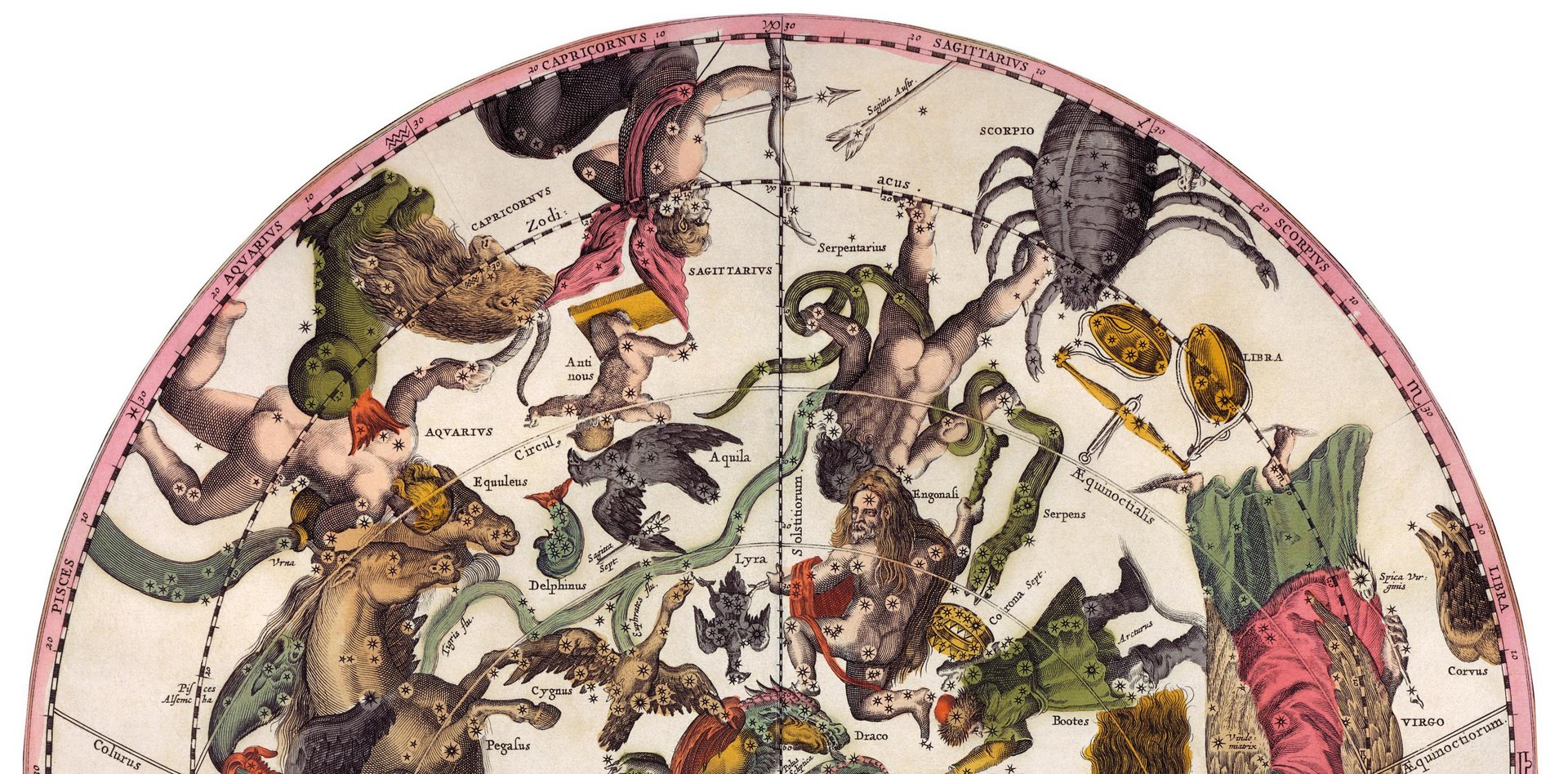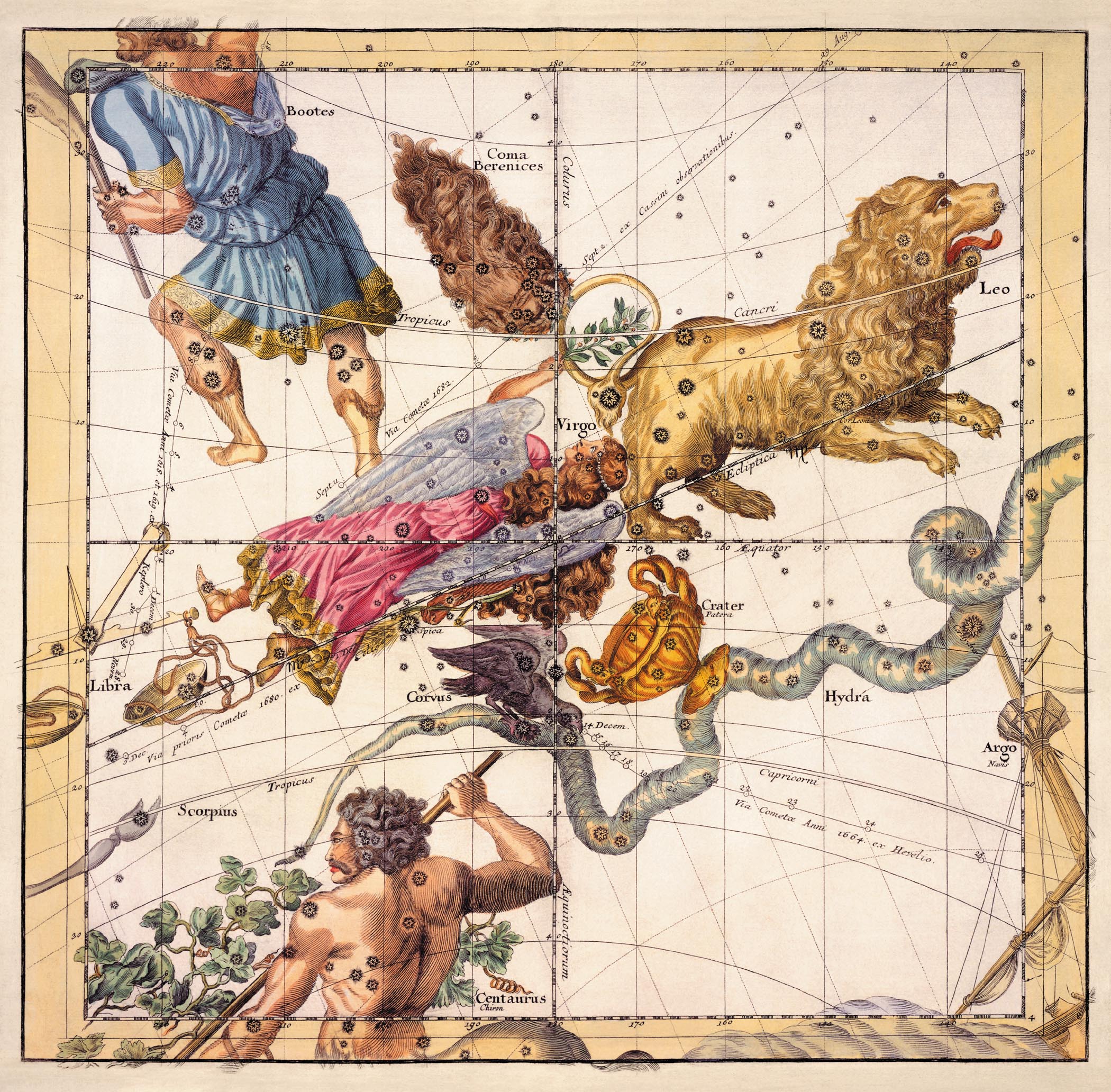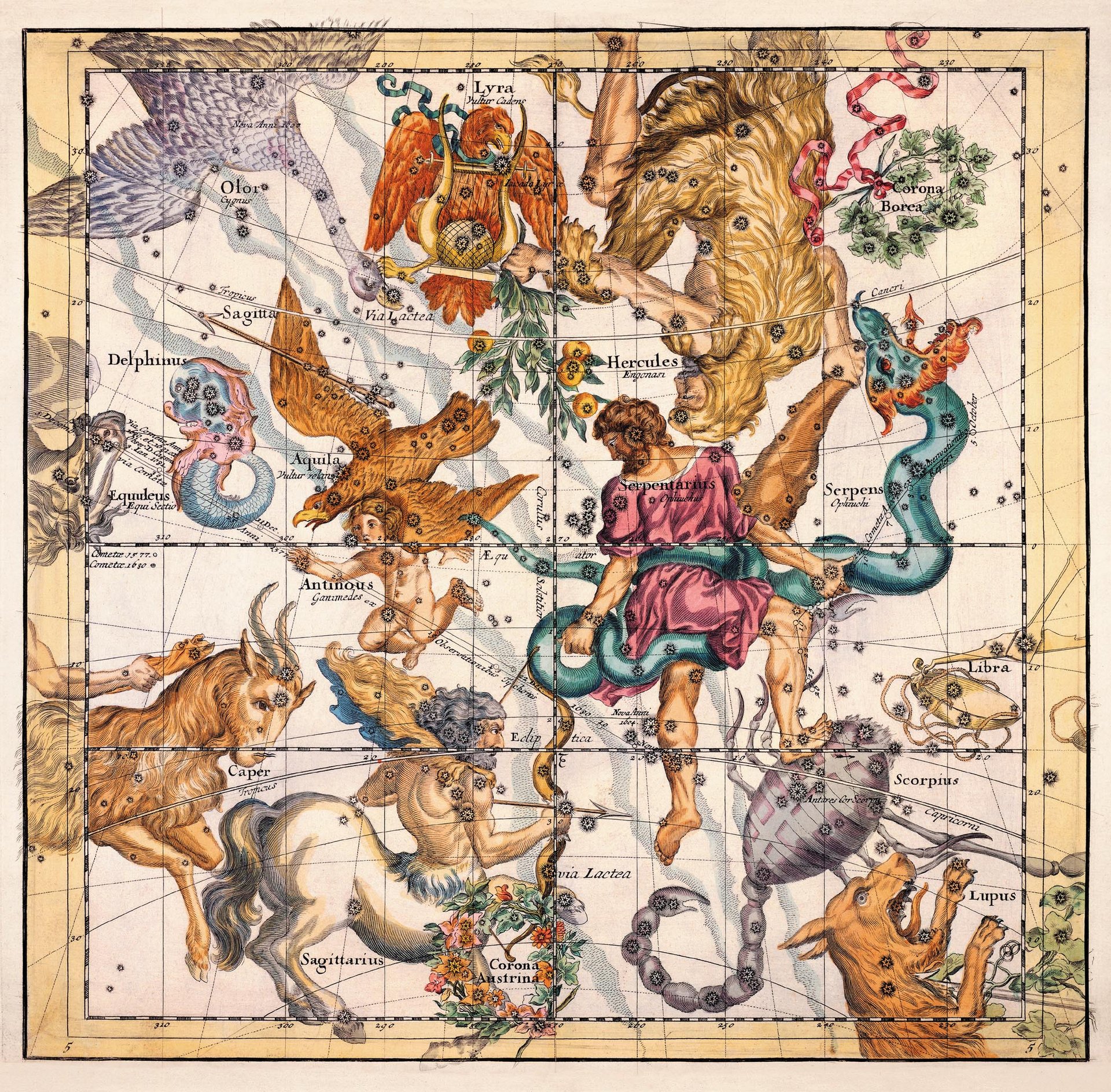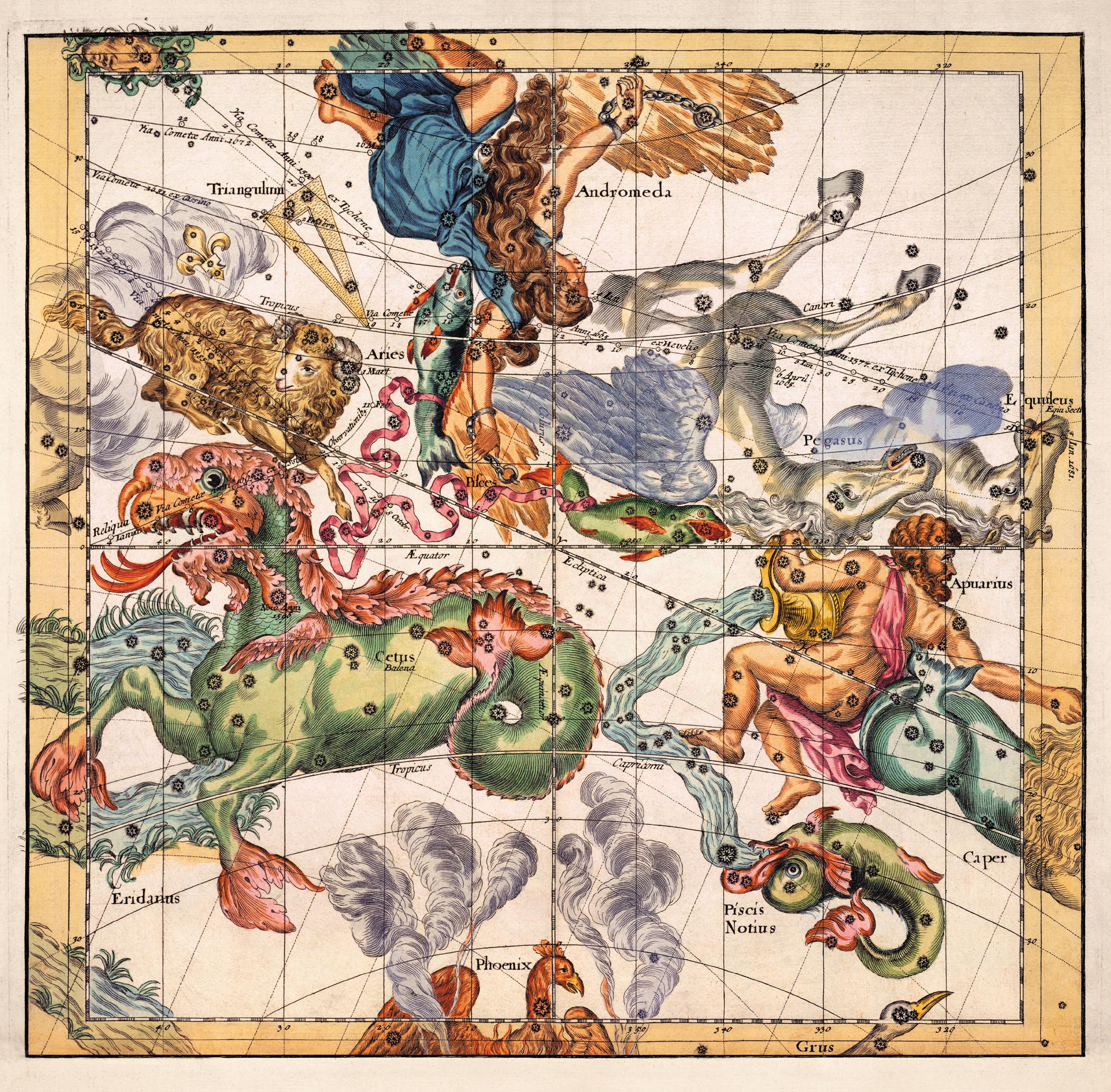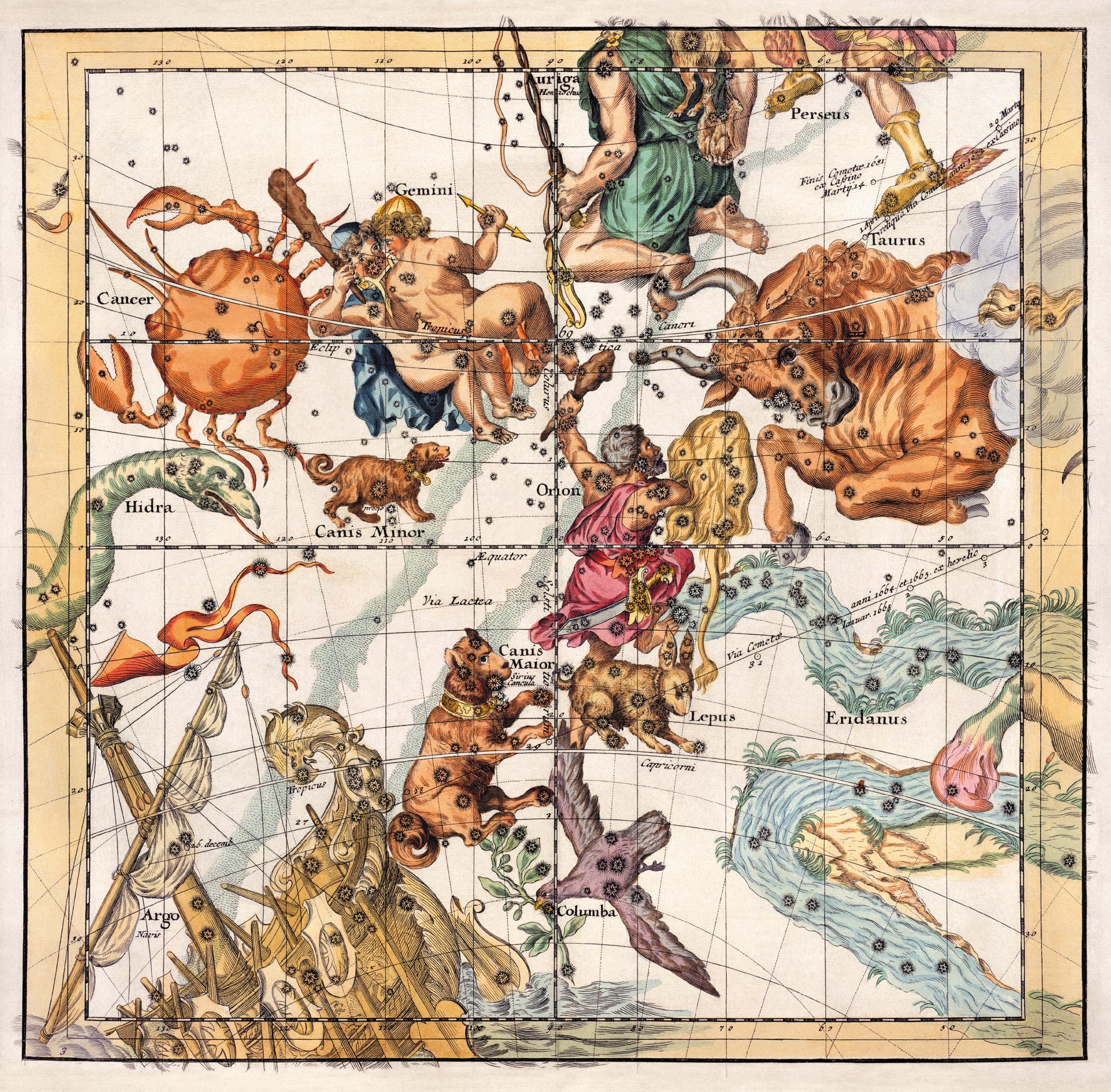Eridanus is a meandering connection of stars that were recognized by various cultures as a river. In Egypt, it represented the Nile. In Greek mythology, its water was used by Hercules to help clean the stables of King Augeas, as one of his twelve labors. Phaethon fell into this river after being thrown from the Sun Chariot. Although Eridanus is not near the Milky Way, it is sometimes associated with it.
Cetus was an ugly, evil Sea Monster that lived deep in the ocean and personified everything bad. It almost devoured Andromeda, but Perseus chopped its head off before it reached her. It is sometimes referred to as a Whale.
In illustrations, Auriga the Charioteer or Wagoneer, is often shown holding a goat, represented by the star Capella, and two kids. One of the charioteer’s responsibilities was supervising the royal livestock. One story has it that the milk from the goat Amaltheia was fed to Jupiter when he was a child. Another has Jupiter placing the chariot in the sky as an appeasement for causing the physical disability of his offspring Hephaestus, whose son inherited the disability, but invented the chariot to move about more easily.
The Pleiades or Seven Sisters are the daughters of Atlas and Pleione. They were changed into doves and sent into the heavens as stars to avoid the amorous clutches of Orion. Thus, the Seven Sisters always rise before Orion, forever escaping him. A Native American legend also has Seven Sisters who longed to wander among the stars, lost their way home and huddled together so as not to get separated. The seventh star is difficult to see and in both stories it is said that crying blurs its brightness.
The Hyades are Piglets and the half-sisters of the Pleiades, all having Atlas as their father. Together, they make up the 14 Atlantides which reside in Taurus.
There are two stories related to Taurus, the Bull. Jupiter’s wife, Juno, turned the beautiful Io, the daughter of the river god Inachos, into a white heifer to stop Jupiter’s affair with her. In another story, Jupiter fell in love with the beautiful Europa, daughter of Agenor, King of Sideon. To lure her away, he changed himself into a mighty white bull and stood among her father’s cattle. She went to see the white bull and was captivated by its friendliness. After getting on its back for a ride, Jupiter rode off with her to Crete. Afterward she bore a son, Minos, who became King of Crete.
Fornax, the Furnace and Caelum, the Engraver’s Tool have no lore because they were added in the 1600’s.
The Phoenix is a Great Bird that lives for 500 years and can regenerate itself from its own ashes. At the end of its life, it builds a nest and lays until the noon sunlight strikes it, setting it aflame. From the ashes comes forth a worm that transforms into a new Phoenix.
Columba, the Dove was set aflight by Jason to see how it would fare between the dangerous rocks of a channel. It returned safely, providing Jason with a good omen to sail his ship Argo through the same waters. The god of wisdom, Minerva, placed the bird in the sky as a reward for its helpful role.
Gemini, the Twins, represented by the stars Castor and Pollux, were warlike heroes who protected seafarers from pirates. Pollux was immortal but Castor was not and was eventually killed in a quarrel. Pollux then asked Jupiter for death so he could be with his twin, but immortals cannot be killed. However, Jupiter allowed him to live alternately one day with the gods and the other in Hades with his brother. Thus, the stars Castor and Pollux take turns in rising and setting.
